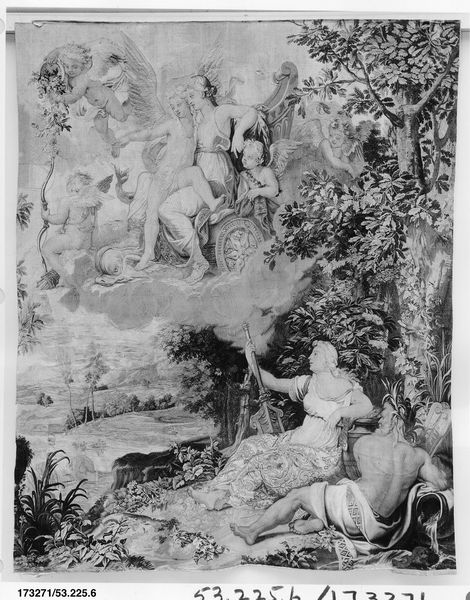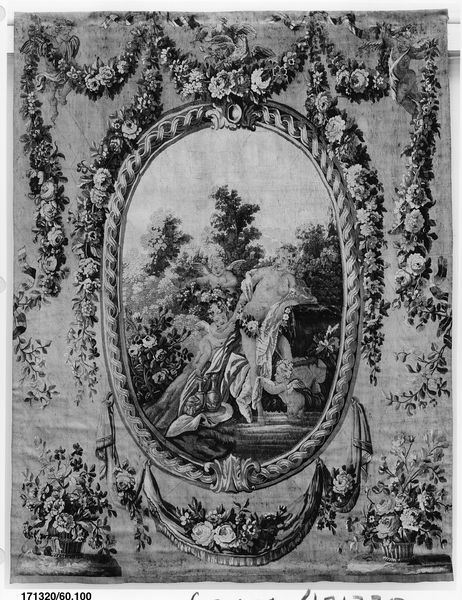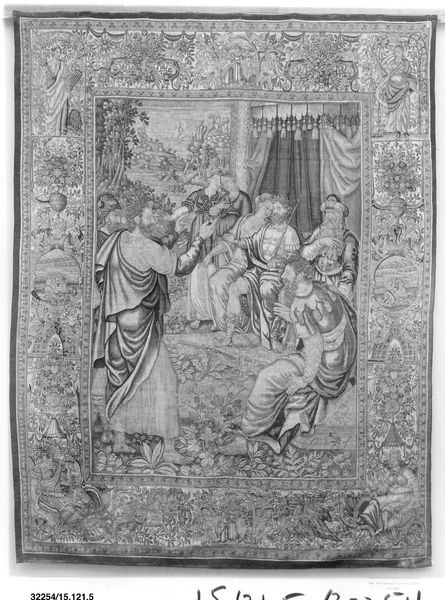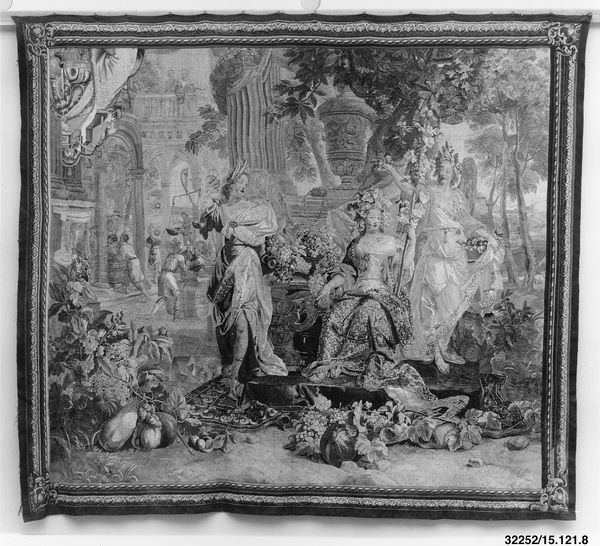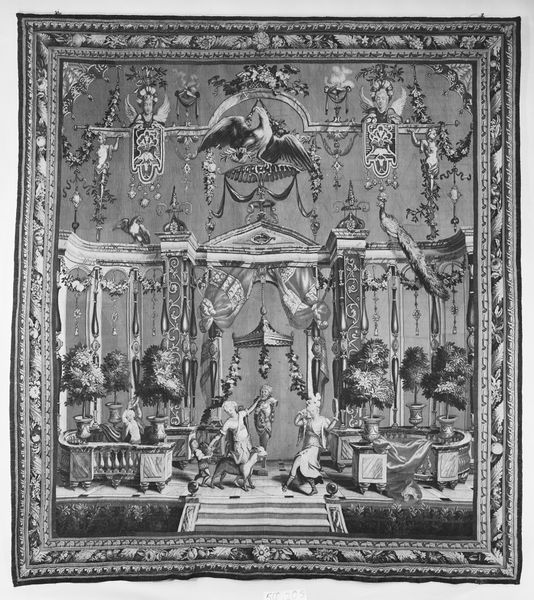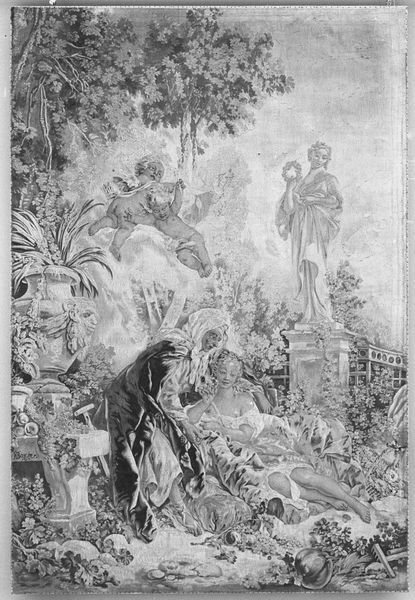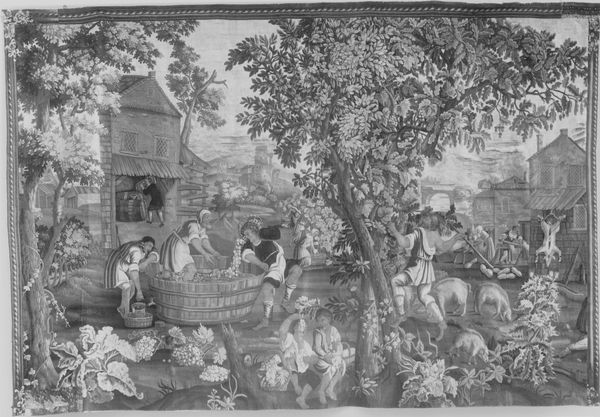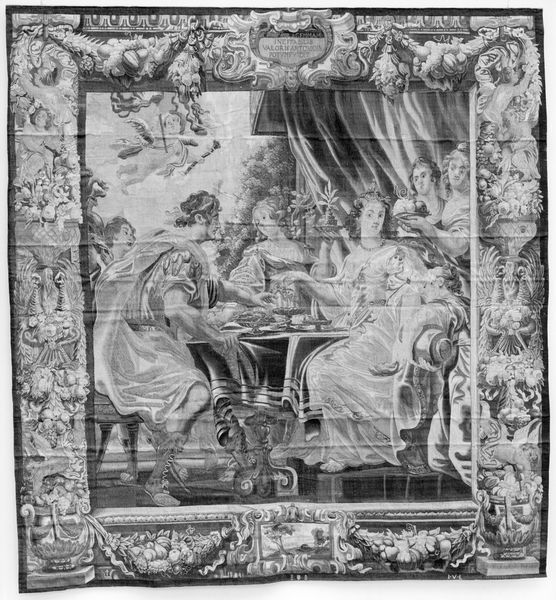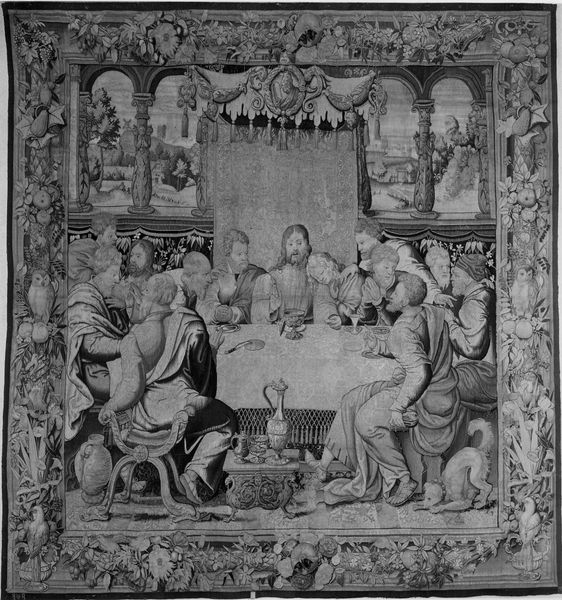
The Gardener from a set of the Italian Village Scenes 1734 - 1762
0:00
0:00
textile, sculpture
#
neoclassicism
#
landscape
#
textile
#
charcoal drawing
#
figuration
#
child
#
sculpture
#
black and white
#
15_18th-century
#
men
#
genre-painting
#
decorative-art
#
rococo
Dimensions: 9 ft. 2 1/2 in. × 73 in. (280.7 × 185.4 cm)
Copyright: Public Domain
Curator: Just inside this gallery we find "The Gardener from a Set of Italian Village Scenes," created by Francois Boucher between 1734 and 1762. It's currently housed at the Metropolitan Museum of Art. Editor: My first impression? It feels staged, theatrical. Even in monochrome, there’s a distinct artificiality about the landscape. The composition feels carefully arranged. Curator: Absolutely. Consider the labor involved in creating such a tapestry. Think about the weavers, the dye-makers, the very specific social context that allowed for the production of decorative art like this. These textiles served a purpose in aristocratic life, displaying wealth and status. Editor: I see that, but also the idealized vision. The carefully placed statues create an interesting tension. They interrupt what could be mistaken for a simple outdoor scene with suggestions of mythology and permanence, especially when contrasted with the human subjects, whose garments are so ephemeral in their Rococo styling. Curator: Exactly. And these weren’t just images; they were functional pieces used to adorn rooms, providing warmth, acting as room dividers, a testament to the guild system. How many hands touched this tapestry, contributing their labor to create an image of leisure and beauty for the elite? Editor: Looking closely at the way light and shadow are depicted using only varying shades, I think that Boucher must have put a lot of planning into what this scene was meant to communicate to contemporary viewers. The gaze is skillfully guided through architectural forms that create movement within the landscape. Curator: Thinking about that communication, these pieces reinforce societal hierarchies and assumptions. While celebrating a certain aesthetic of cultivated nature, we are shown a way of life made possible through exploiting the resources and labour of the working class. Editor: Indeed, but within the weaving, light seems to take on almost palpable weight, structuring the composition into neat subsections where the viewer's eye can come to rest. The medium has a subtle texture that adds complexity, doesn't it? Curator: Seeing this tapestry allows us to reconsider how the work that produces ‘art’ might actually challenge what gets considered ‘art’. The creation of these ornate tapestries demanded an extensive guild system that often elevated work to artistry, blurring traditional lines. Editor: In considering the impact and aesthetic accomplishment evident here, I see it also highlights our endless capability to capture the grace and light we perceive around us.
Comments
No comments
Be the first to comment and join the conversation on the ultimate creative platform.

